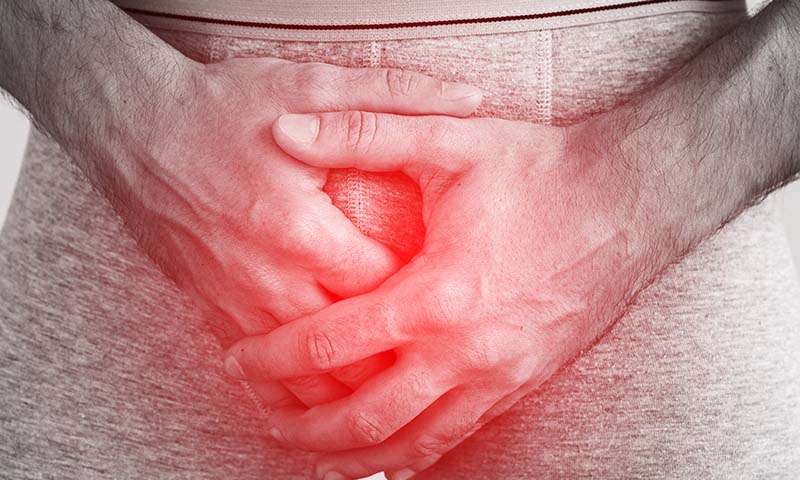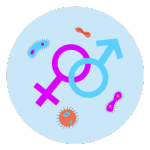Cryptorchidism : Types, Causes & Treatment
Medically Reviewed by Dr Sravya, MBBS, MS
Introduction

Inguinal hernia, testicular trauma, low fertility/infertility, testicular cancer, and torsion are the associated issues. Effective diagnosis and treatment are essential for prevention of Cryptorchidism.
This condition with torsion is one of the specific types of testicular torsion. Unilateral or bilateral types of this condition is an abnormality in most cases and suggests that it is a complicated disorder arising due to interactions between genetic and environmental factors.
A condition of undescended testicles is very common in premature babies as compared to fully developed infants. An undescended testicle usually descends down on its own within some months after birth.
Table of Contents
Types
- True undescended testis- The testis can be found at any place in the natural path of descent i.e., Retroperitoneal, intraabdominal, in the inguinal canal, or at the superior aspect of the scrotum
- Ectopic undescended testis- The testis can’t be found at any place along the natural path of descent. They are located In the femoral canal, opposite to the scrotum, in the perineum, or the femoral canal.
- Hypoplastic- This type describes underdeveloped testis. These are dysgenetic which have derangement of seminiferous tubules and testes function.
- Vanished- It may be due to intrauterine testicular torsion in late gestation. Only 20-40% of noticeable testes are truly absent at the surgery time.
- Ascent- It’s a type of testis that was found in the scrotum but has returned to the inguinal canal.
- Retractile- This type of testis moves in and out of the scrotum
- Acquired- The spermatic cord is unable to grow in proportion to body growth.
Causes
In fully developed infants, the cause of cryptorchidism generally cannot be determined, it is a very common but sporadic, idiopathic congenital defect. It can be genetics combined with maternal and environmental factors that may disrupt hormones and physical changes that are responsible for testicular development and descent.
As testicular descent is a complex, multistage process, it is no surprise that no single common cause for this condition has been identified, as maldescent may be caused by derangements in any of the multiple endocrine and morphological pathways. Many authors think that androgen deficiency in utero, possibly related to abnormal placental or pituitary function, is the cause of cryptorchidism in some children.
Maternal smoking during pregnancy also has been identified as a likely cause of cryptorchidism in male offspring.
Possible underlying risk factors include:
- Premature infants are born before the testicles descend.
- Small for gestational-age infants
- Smaller placental weight
- Endocrine disruptors can interfere with normal fetal hormone balance
- Maternal obesity
- Maternal diabetes
- Maternal exposure to DES
- Pesticides
- Alcohol consumption during pregnancy more than five times per week increases risk up to thrice.
- Cigarette smoking
- Family history
- Cosmetics use
- Exposure to phthalate (DEHP)
- Ibuprofen
- Preeclampsia (Serious Blood pressure condition during pregnancy)
- Neonatal disorders- Down syndrome, Prader-Willi syndrome, and Noonan syndrome
- Persistent Mullerian duct syndrome (caused by the insufficient amount of Mullerian inhibiting factor)
- In-vitro fertilization
Treatment
A thought is developing that hormone treatment is not required for undescended testes and that orchidopexy should be done in the first year after birth. Surgery is the only option to save the testis. Both the time and the angle of torsion correlate with the recovery rate.
There are different approaches to performing orchiopexy. If the testis is not noticeable, a laparoscopic approach is followed; this can be a one-stage or two-stage surgery process depending on the indulgence of the spermatic cord and testicular vasculature.
If the testis is located in the inguinal canal, an inguinal orchiopexy is carried out. If the testis moves back and forth or at the top of the scrotum, the choice of surgery is the scrotal approach.
Generally, only one testis is fixated and then allowed to heal, so that in case of blood supply is stopped or infection develops, the patient has one testis remaining.
A. Scrotal Approach
- An incision in the ipsilateral hemiscrotum down to Dartos' fascia is made.
- Dissection through the soft tissue toward the internal inguinal ring until the testis is visible.
- If the ilioinguinal nerve comes in contact with, it should be isolated and protected.
- Testis are brought down into the operative field by retracting it gently.
- Detorsion of the spermatic cord is performed in case it is needed.
- Gubernaculum and cremaster muscles are separated from the spermatic cord and tacked to Dartos' fascia medially and laterally, allowing enough length of the spermatic cord for the testis to sit comfortably in the scrotum.
- High ligation is required in dissection if there is a hernia sac or patent processus.
- The tacking suture is placed 4-0 vicryl in the proximal Buck's fascia, then it is runned in a pleating fashion toward the end of the fascia, then turned and the suture is brought back to the tacked suture in the same manner. The bites must be ensured not to go into the spermatic cord.
B. Inguinal Approach- The most common approach
- An incision is made over the inguinal canal, like an open inguinal hernia repair. Dissection is done through the subcutaneous tissue to expose the inguinal canal and external ring.
- External oblique fascia is opened. If the ilioinguinal nerve is identified, it is isolated and preserved.
- Undescended testis and spermatic cord are identified.
- The processus vaginalis of the spermatic cord is identified and dissected off. Processus vaginalis is generally on the anteromedial aspect of the spermatic cord, high suture ligation of the sac is performed to provide adequate length for the testis to reach the scrotum without tension.
- The spermatic vessels ensured laying on anterior to the vas deferens.
- The Dartos' pouch is developed by making an incision in the ipsilateral hemiscrotum, A nontraumatic grasper is passed through the incision up into the inguinal canal and the testis is pulled down gently into the pouch.
- The testis are tacked down to Dartos' fascia using absorbable suture. The Dartos' muscle is closed and incision in the scrotum.
- The inguinal incision is closed in multiple layers, including the inguinal canal and Scarpa's fascia, before closing the skin.
C. Laparoscopic Approach
- Two additional ports under direct supervision are placed, triangulating with the appropriate inguinal canal.
- The testicle location, viability, and vasculature are identified.
- Gubernacular attachments are released carefully and the cord structure from the abdominal wall is mobilized.3. Gubernacular attachments are released carefully and the cord structure from the abdominal wall is mobilized.
- Dartos' pouch is developed in the scrotum by making an incision in the ipsilateral hemiscrotum, placing a port under direct supervision, and then an instrument is passed through the inguinal canal into the peritoneal cavity, grasping the testicle and gently pulling it down into Dartos' pouch.
- The testis are fixed to the Dartos' fascia using absorbable sutures.
Complications associated with orchiopexy2
Complications associated with any procedure are infection, bleeding, and scarring. In Orchiopexy along with these complications, there are several severe complications associated with it. These include:
- Testicular atrophy- It is the most devastating complication that occurs generally due to over-skeletonization during dissection.
- Damage or ligation of the vas deferens- The vas deferens can be devascularized during dissection, it can also be unintentionally ligated or transected.
- The ascent of the testis- This occurs when the testis has become fixed in the scrotum under excessive tension, often due to not freeing up the connective tissue around the spermatic cord appropriately.
- Infection- Risks of infection of both testes with bilateral orchiopexy, which may result in loss of both testes.


















